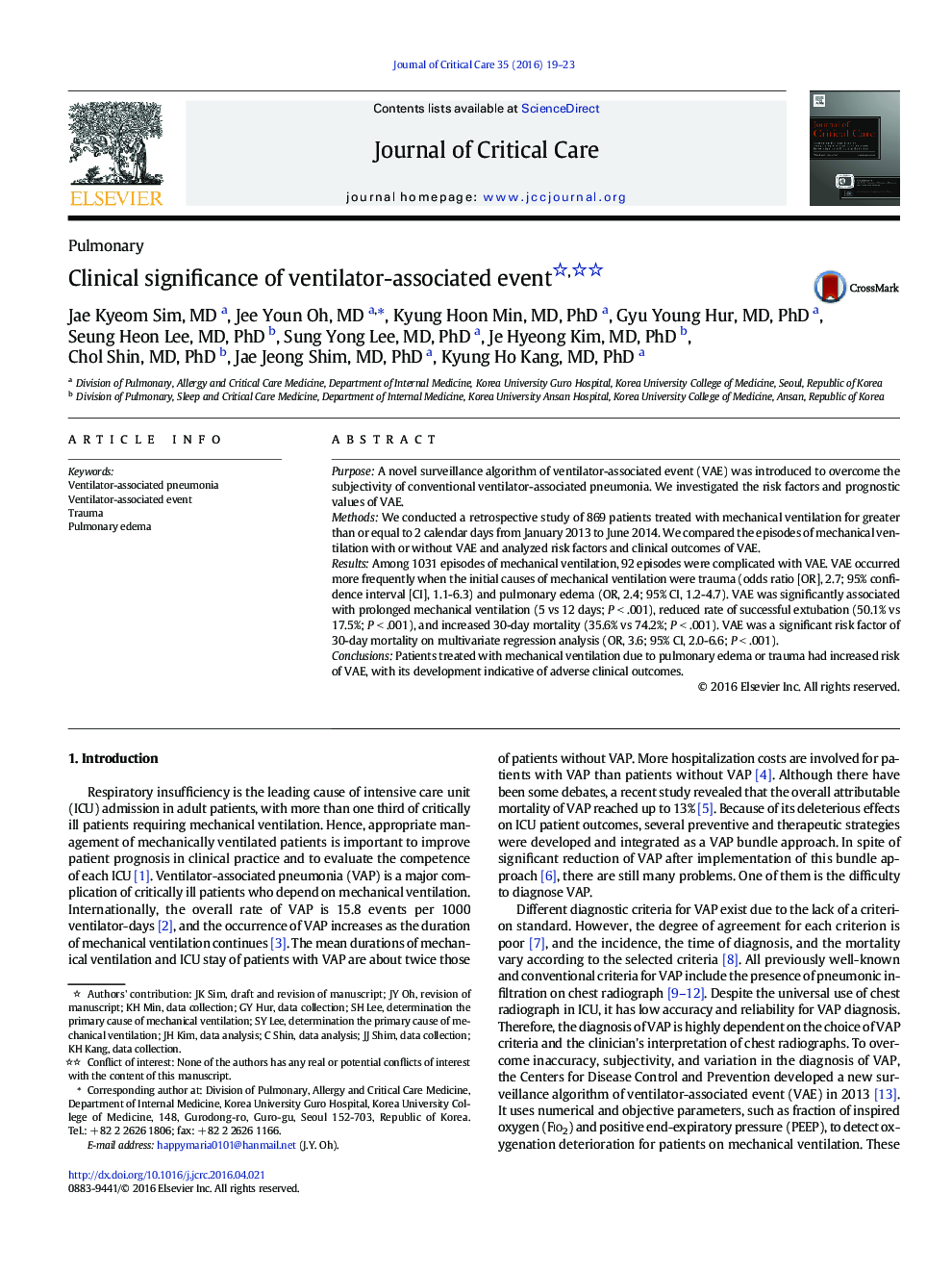| Article ID | Journal | Published Year | Pages | File Type |
|---|---|---|---|---|
| 2764421 | Journal of Critical Care | 2016 | 5 Pages |
PurposeA novel surveillance algorithm of ventilator-associated event (VAE) was introduced to overcome the subjectivity of conventional ventilator-associated pneumonia. We investigated the risk factors and prognostic values of VAE.MethodsWe conducted a retrospective study of 869 patients treated with mechanical ventilation for greater than or equal to 2 calendar days from January 2013 to June 2014. We compared the episodes of mechanical ventilation with or without VAE and analyzed risk factors and clinical outcomes of VAE.ResultsAmong 1031 episodes of mechanical ventilation, 92 episodes were complicated with VAE. VAE occurred more frequently when the initial causes of mechanical ventilation were trauma (odds ratio [OR], 2.7; 95% confidence interval [CI], 1.1-6.3) and pulmonary edema (OR, 2.4; 95% CI, 1.2-4.7). VAE was significantly associated with prolonged mechanical ventilation (5 vs 12 days; P < .001), reduced rate of successful extubation (50.1% vs 17.5%; P < .001), and increased 30-day mortality (35.6% vs 74.2%; P < .001). VAE was a significant risk factor of 30-day mortality on multivariate regression analysis (OR, 3.6; 95% CI, 2.0-6.6; P < .001).ConclusionsPatients treated with mechanical ventilation due to pulmonary edema or trauma had increased risk of VAE, with its development indicative of adverse clinical outcomes.
